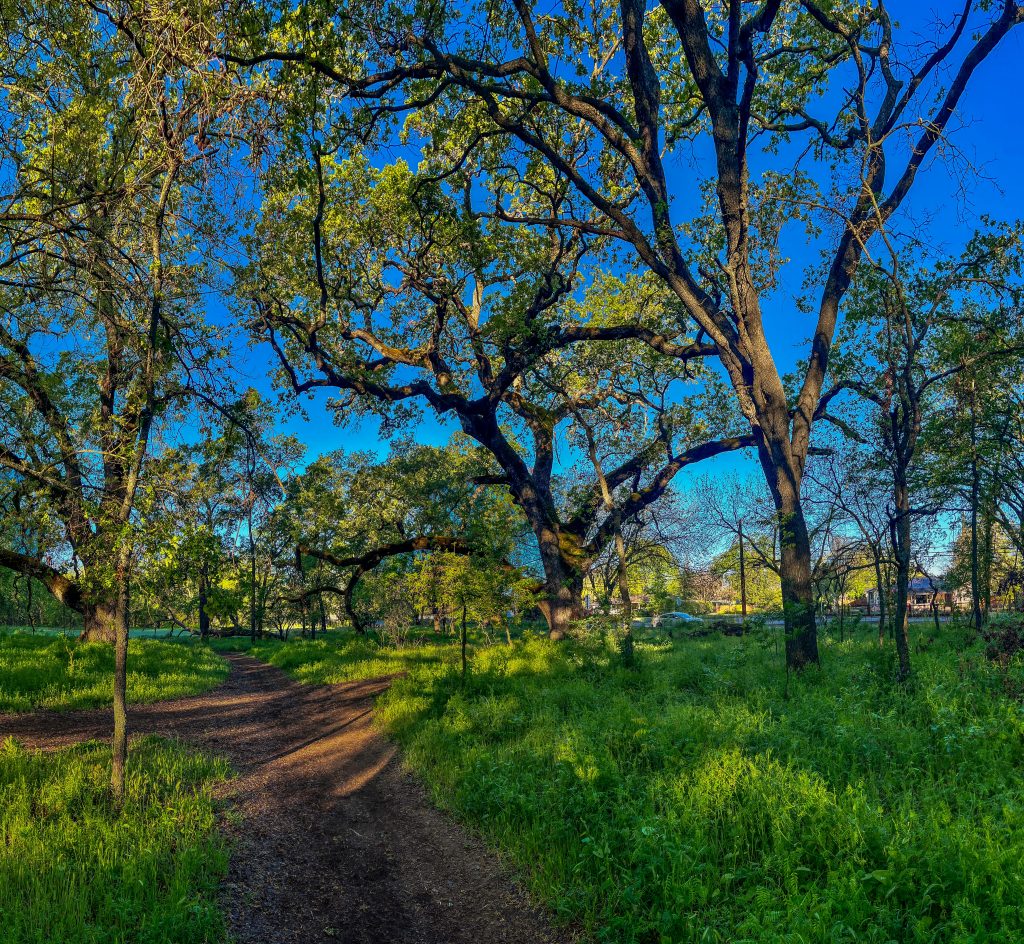A Walk in the Park – March 28, 2022 by Tom Barrett
I was excited to get into the Park this morning after our brief and insubstantial rain yesterday. It always smells delightful when it is damp and sunlight glistens off of leaves. I wasn’t disappointed. Every time I enter Lower Park at Bryant Avenue and Vallombrosa I have to admire the magnificent large Valley Oak that guards the entranceway.
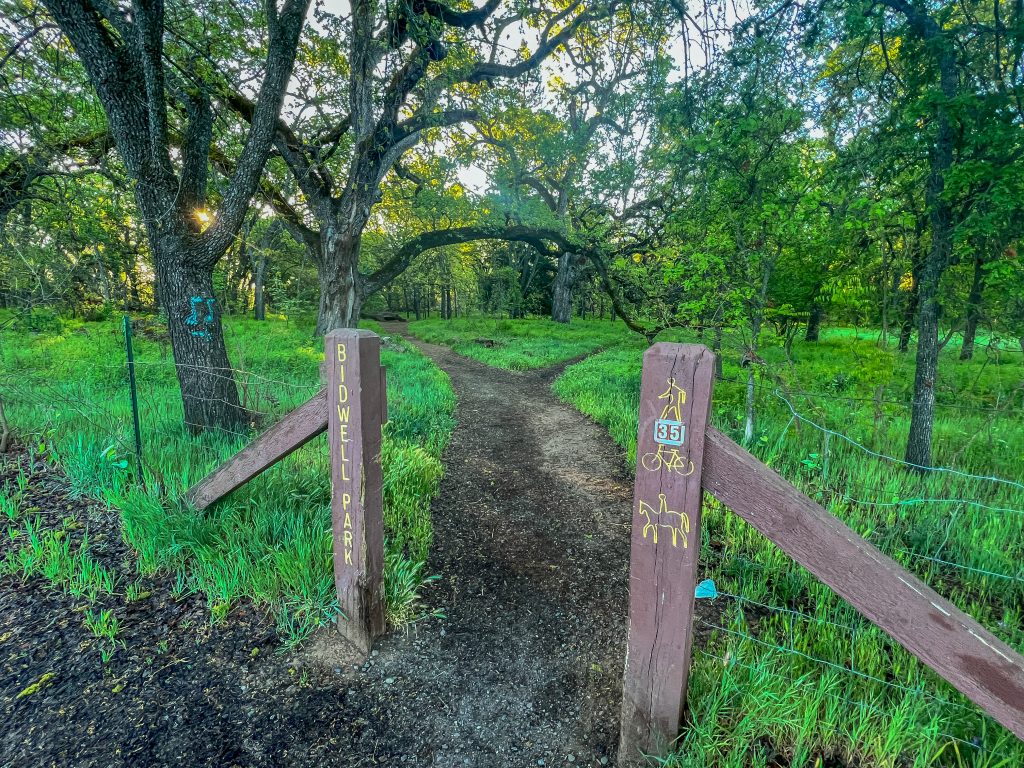
This old, stately Valley Oak is on its last legs, okay limbs. A lot of the bark around the lower part of the tree has come off and it loses more every year. It will probably be dead in a couple years. It is one of the biggest oaks in Lower Park and has a huge canopy.
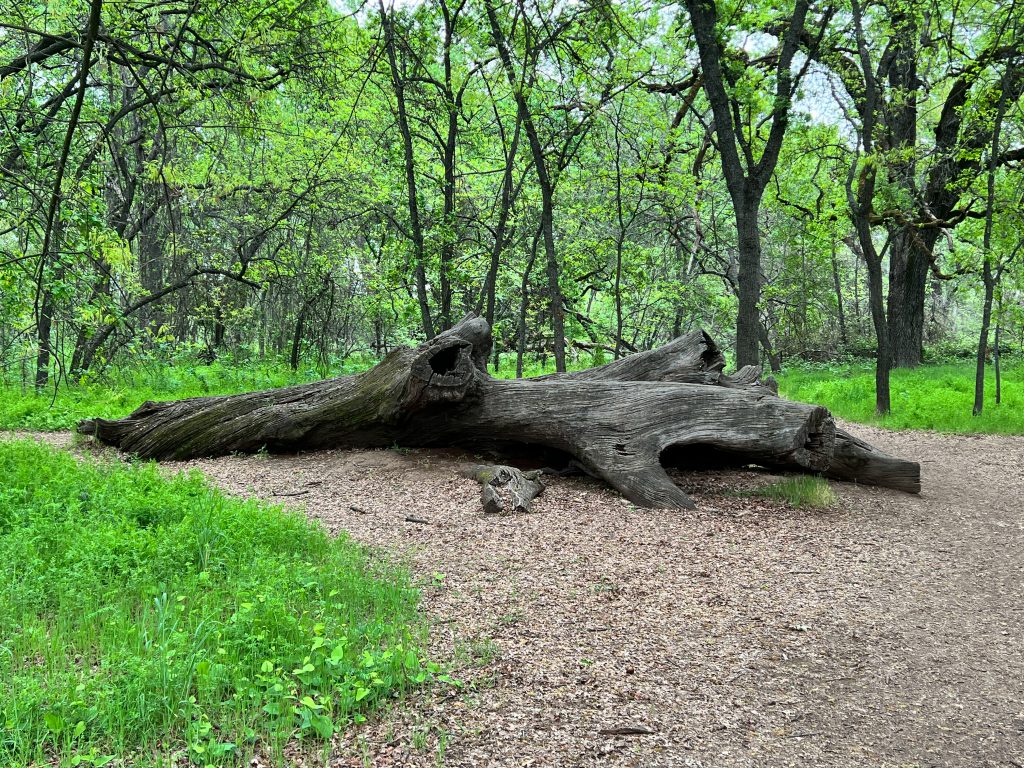
The carcass of another giant oak thirty yards down the trail past this one was once just as majestic; it fell years ago. Most of its limbs were bucked up and removed leaving the massive trunk that kids love to play on and homeless people like to camp underneath.
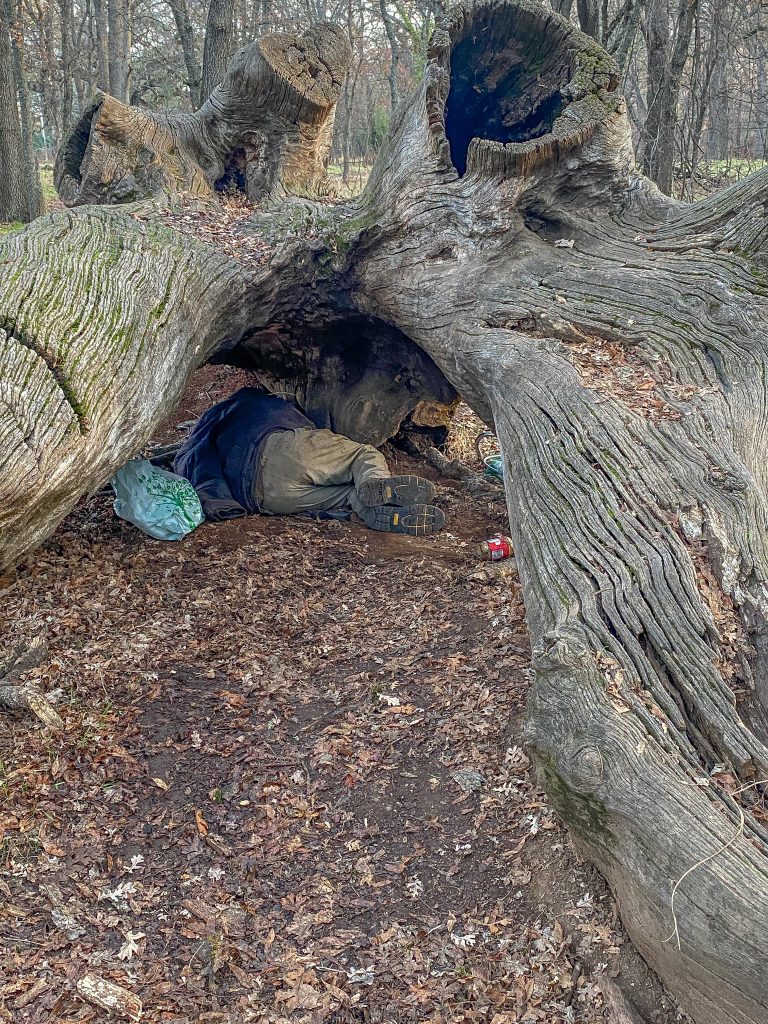
Along the trail California pipevine and vetch cover most of the ground in this area. The brief rain on Monday left drops of moisture on the leaves but little of it made it into the soil. Despite the lack of rain this year, it is looking to be a good but short year for most of the Park plants.
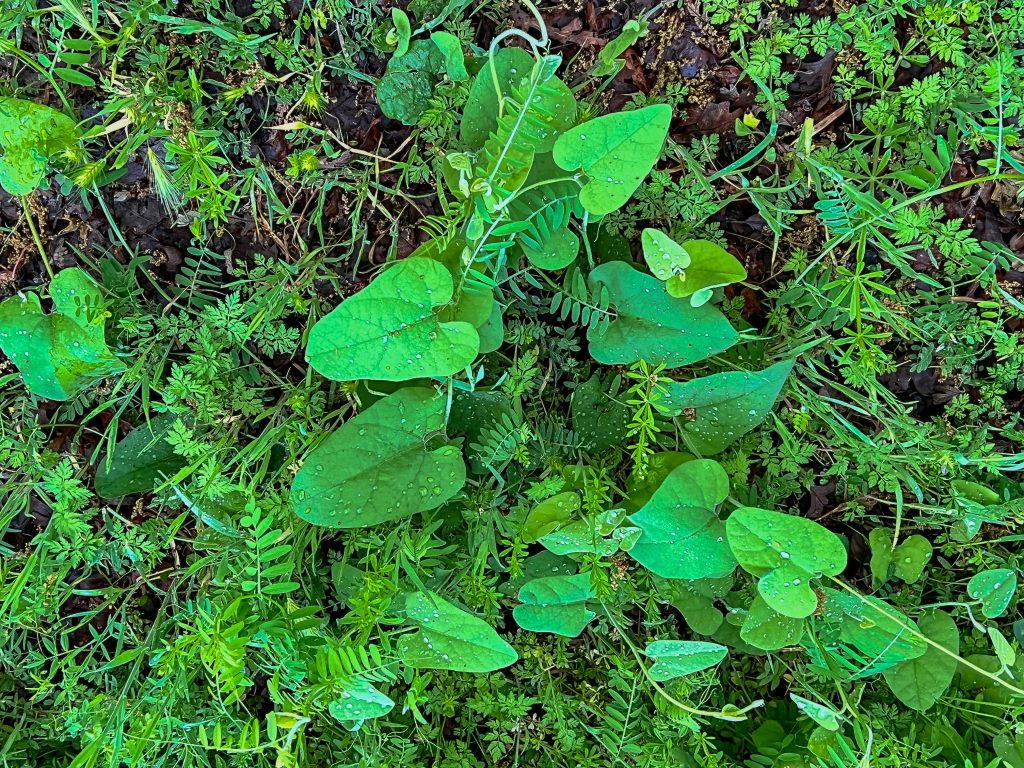
As I walk down the trail the Poison Oak (Toxicodendron diversilobum) lines the trail. After dropping their leaves in late fall and early winter they disappear from Park users sight, although they will still impart a severe rash if the stems are touched. They leaf out and grow rapidly in the Spring. Their growth spurt pushes them out into the trails in Bidwell Park and as I watch runners, walkers, and bikers hit them as the pass by it makes me cringe. They will likely be sporting poison oak skin rashes within a couple days. Make sure you know what this plant looks like because it is everywhere in the Park.
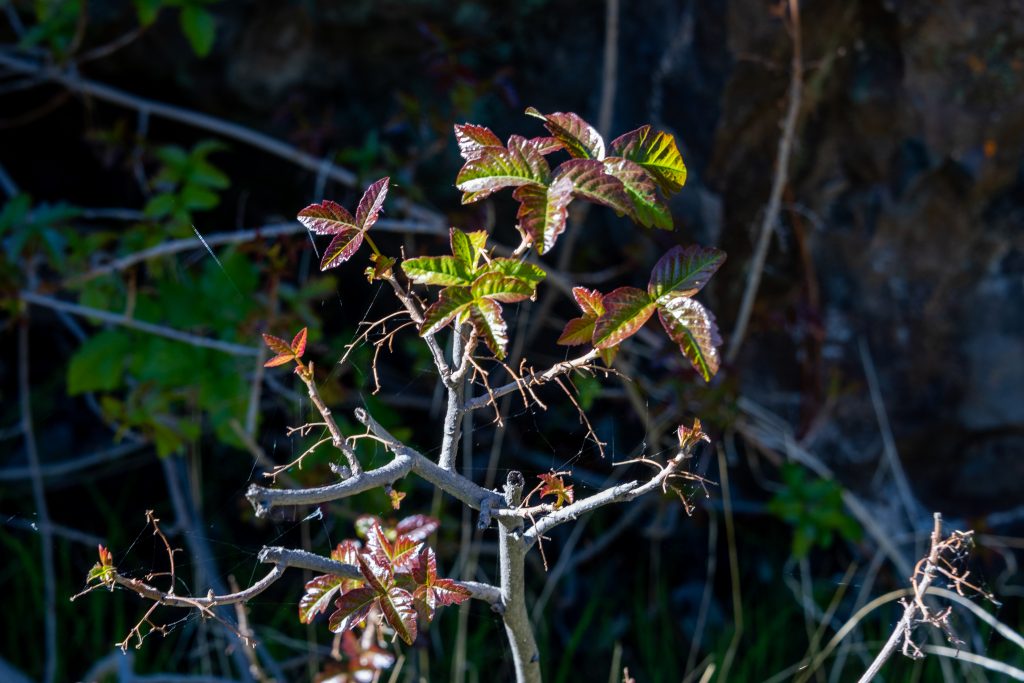
When it leafs out it can be quite red, which is a distinguishing characteristic of poison oak; however, the redness doesn’t last long and sometimes doesn’t even show up on the leaves.
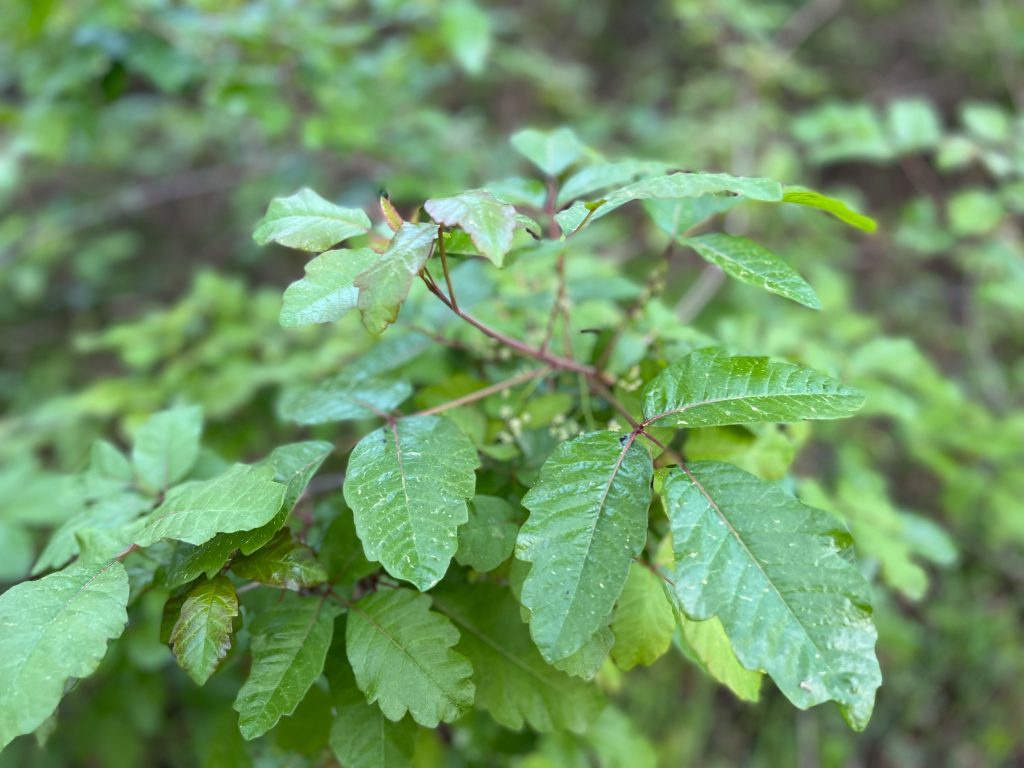
I watched a woman grab on to a poison oak branch that had grown out into the main path as she walked by with her child oblivious to what she was touching. Granted some people aren’t effected by poison oak, but most are like me, very susceptible to it.
Poison oak is flowering now and soon berries will be gracing their branches. The berries and eventually seeds of this common native plant are eaten by birds, squirrels, and deer, who spread them in their feces after ingesting them. In this manner they are also spread by the goats the City brings in in the fall to prune them and other plants for fire suppression. However, this plant loses its leaves in the fall and the trimming done by goats only encourages the plants to grow in the Spring. Of course, the goats package these seeds too in their fertilizer and spread it around Lower Park where they graze.

In the 90’s the Park Department tried a couple control burns in Lower Park to reduce vegetation and fuel loads. The first control burn was deemed successful and a second one was conducted a short while later. While the Park Department posted the fact that a control burn was happening in Lower Park it didn’t stop a woman and her son from running through the smoke. They claimed a couple days later that they had inhaled poison oak from the smoke and it affected their lungs and sued the City for damages. The City settled out of court for an undisclosed amount and stopped controlled burns in Lower Park.
A woman contacted FOBP in 2021 with a concern that there was Poison Hemlock (Conlum maculatum) along the pathways in Cedar Grove where she and her children were walking and playing and she was worried about children getting poisoned from it (you can’t get poisoned from touching Poison Hemlock, only by eating it). I checked it out for her as I have never heard of Poison Hemlock growing in that area. As it turned out it was Burr Chervil (Anthriscus caucalis) a common obnoxious, invasive weed found in great abundance in Lower Park. It is commonly called the “Velcro plant” because the seeds attach to clothing like Velcro, especially to socks and are extremely hard to remove. Chervil’s flowers look similar to Poison Hemlock and Wild Carrot or Queen Ann’s Lace (Daucus carota) flowers but the plant itself is very different, with a thick stem that grows three to five feet tall. However, I told her that Poison Oak was everywhere along those trails and they she and her kids should stay out of the area if there are susceptible to Poison Oak. She demanded that the Park Department should remove it all immediately. I passed her information along to the Park Department but I don’t think they did anything about it.
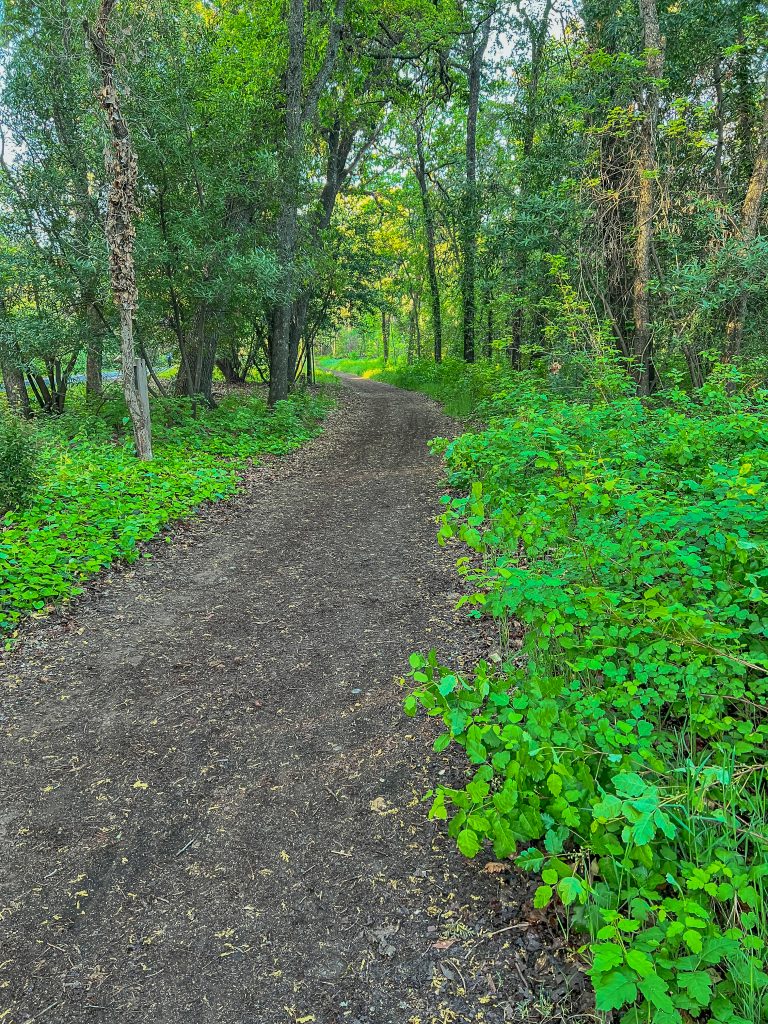
The current City Forester targeted poison oak for removal as an obnoxious weed and was corrected about its weediness. It is a native shrub that benefits a variety of animals and is one of the few green plants seen in the summer when everything else is dried out. He took poison oak off his list of plants to be removed in the Park. The Park Department needs to actively trim back the poison oak encroaching into all the trails in Lower and Upper Park.
Make sure you know what poison oak looks like and be aware that it is everywhere in Bidwell Park.As I walked through the Park I noticed a few other interesting flowers showing up in the past week. Ithuriel’s spears (Triteleia laxa) started popping up through the vetch along Petersen Drive.
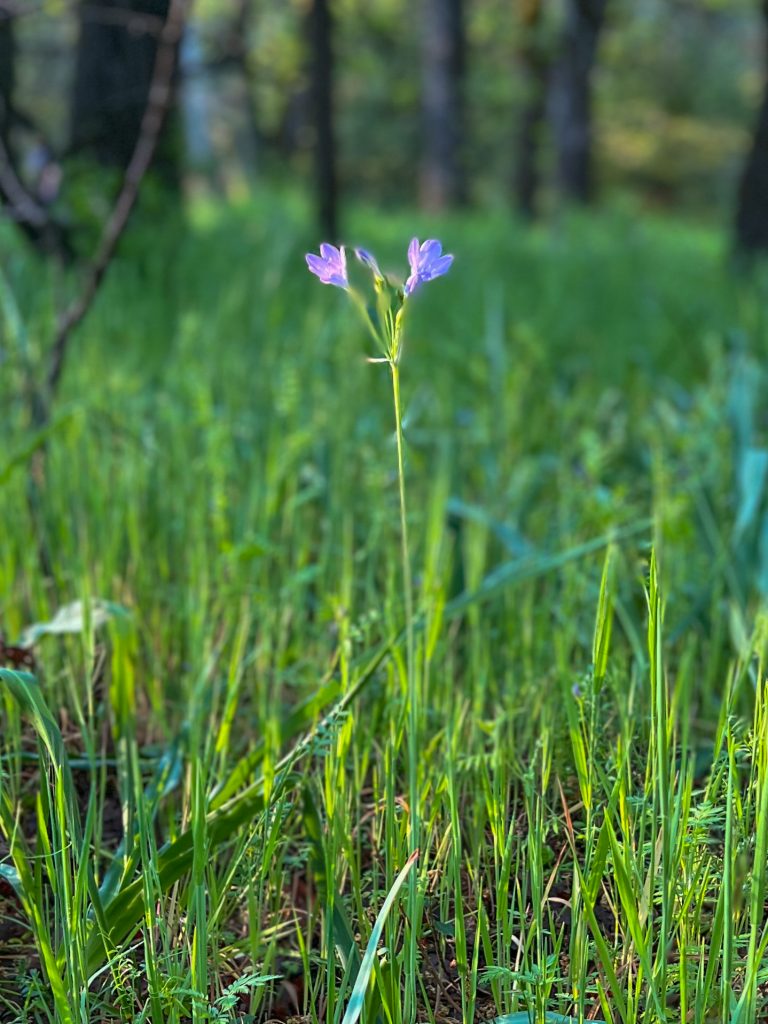
Here is a top down view of these beautiful native plants.
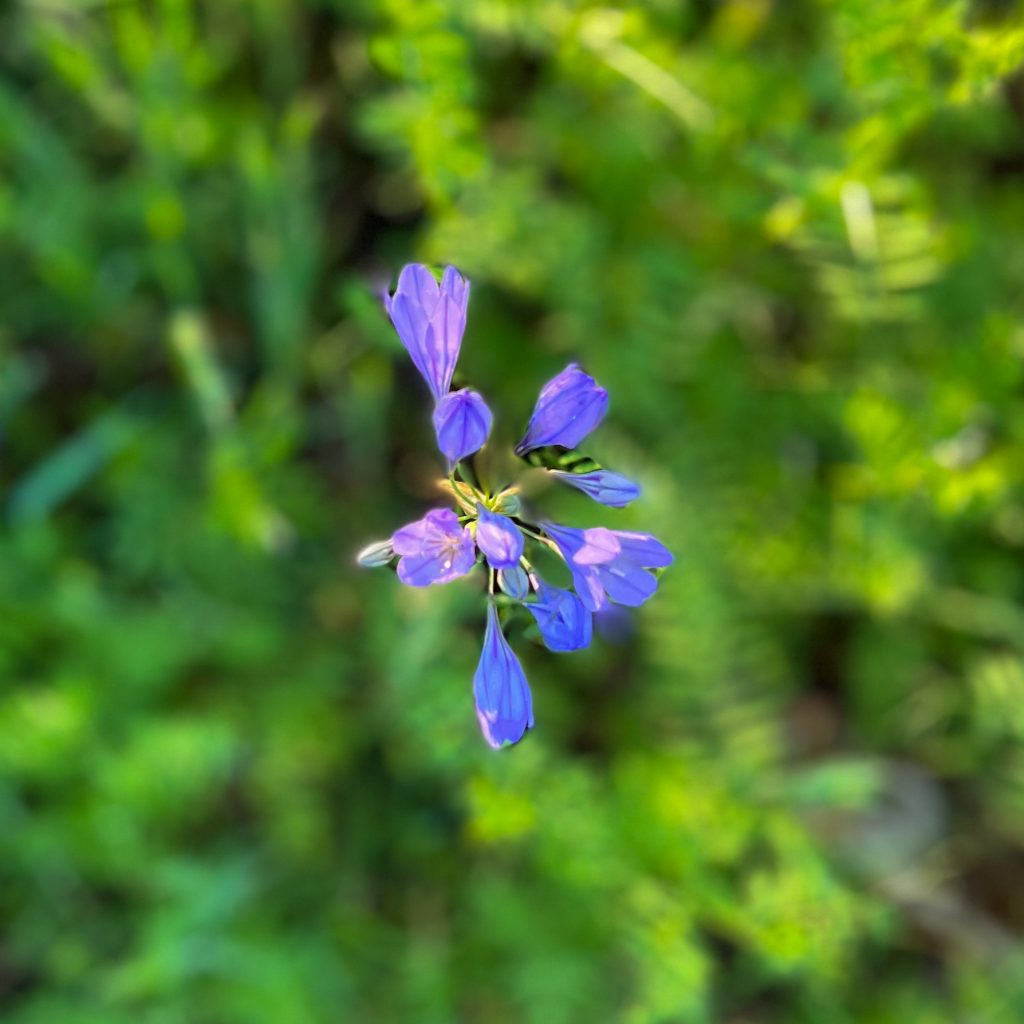
Looking down along the trail near the Vallombrosa fence line I noticed Baby Blue Eyes (Nemophila heterophylla) along the trail. I’ve seen these in Upper Park and this was the first time I noticed them in Lower Park. There was a small patch of these.
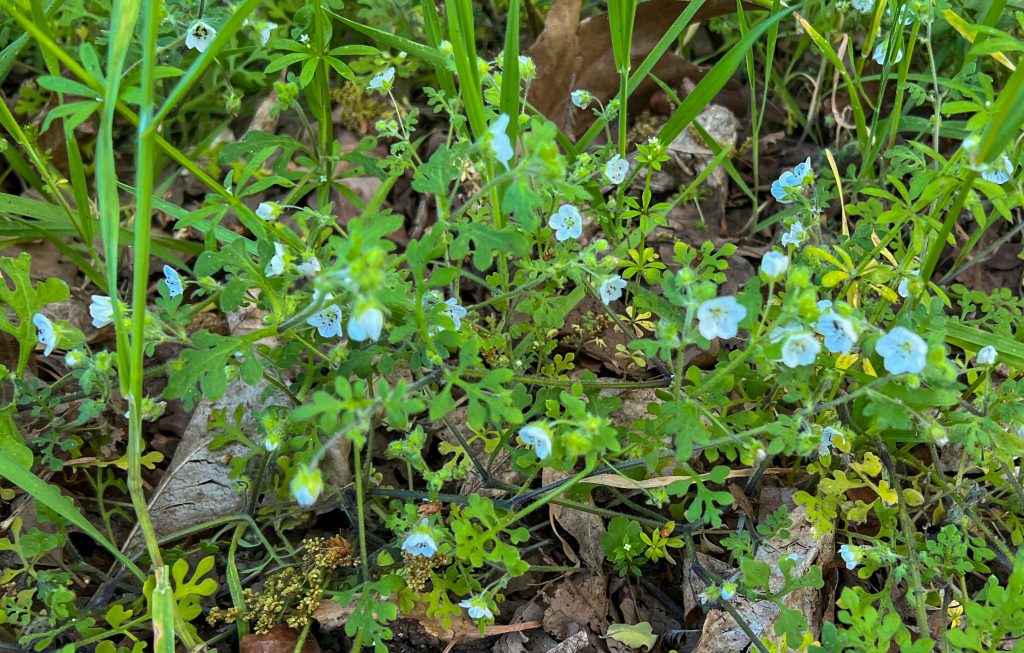
Along with the Baby Blue Eyes was another one of my favorite, yet annoying native plants – bedstraw. There are over 80 different bedstraw or Galium species in California. There are at least two different species in Bidwell Park and probably more. Common bedstraw is found around the world in a variety of locations. It is thought to be native or at least naturalized in California.
Bedstraw gets its name from how it was used, to stuff beds. When dried it maintain some structure and resilience after being crushed.
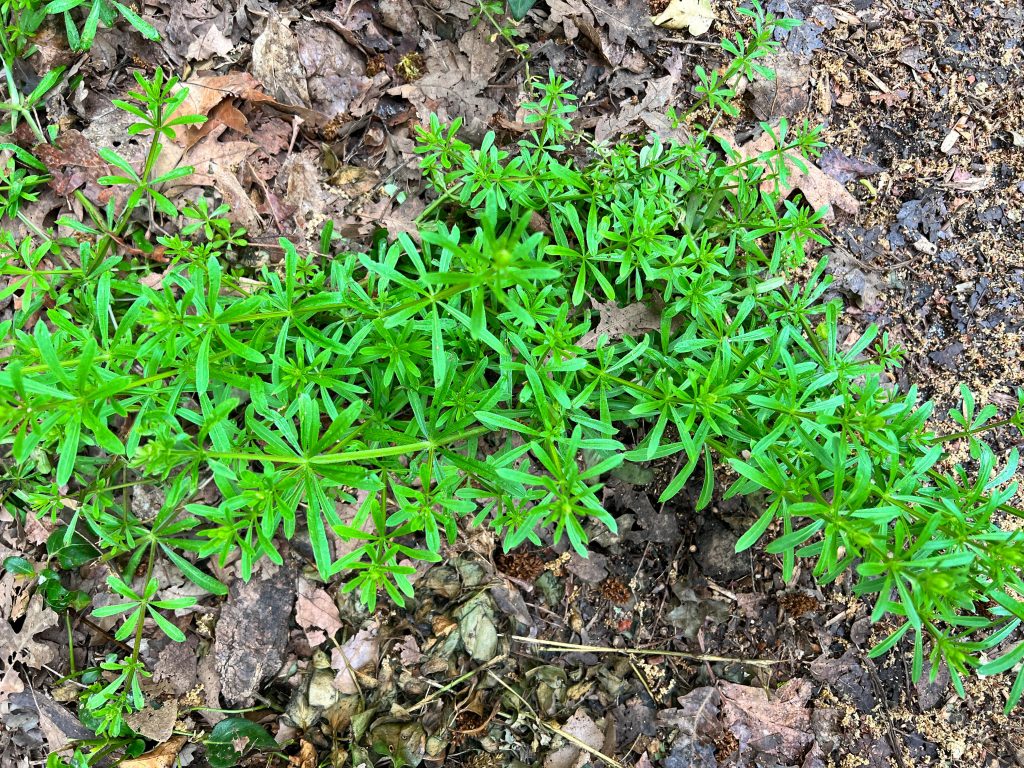
The annoying part of bedstraw is its clinginess, it was probably the original Velcro plant. Check your pant legs after walking in a field with bedstraw whole stems, leaves, and seeds will be attached to your pants or hairy legs. It even clings to your skin. Bedstraw has a number of different names including stickywilly, cleaver, goosegrass, stickyweed, and catchweed that signify its annoying clinging property.
Bedstraw is growing well now and flowering in Bidwell Park. The seeds, like that of Bur Chervil, are vary sticky and people and animals will spread this plant.As I finished my walk in the Park and returned to where I entered I took this multi-image shot of the majestic oak from the Park side.
